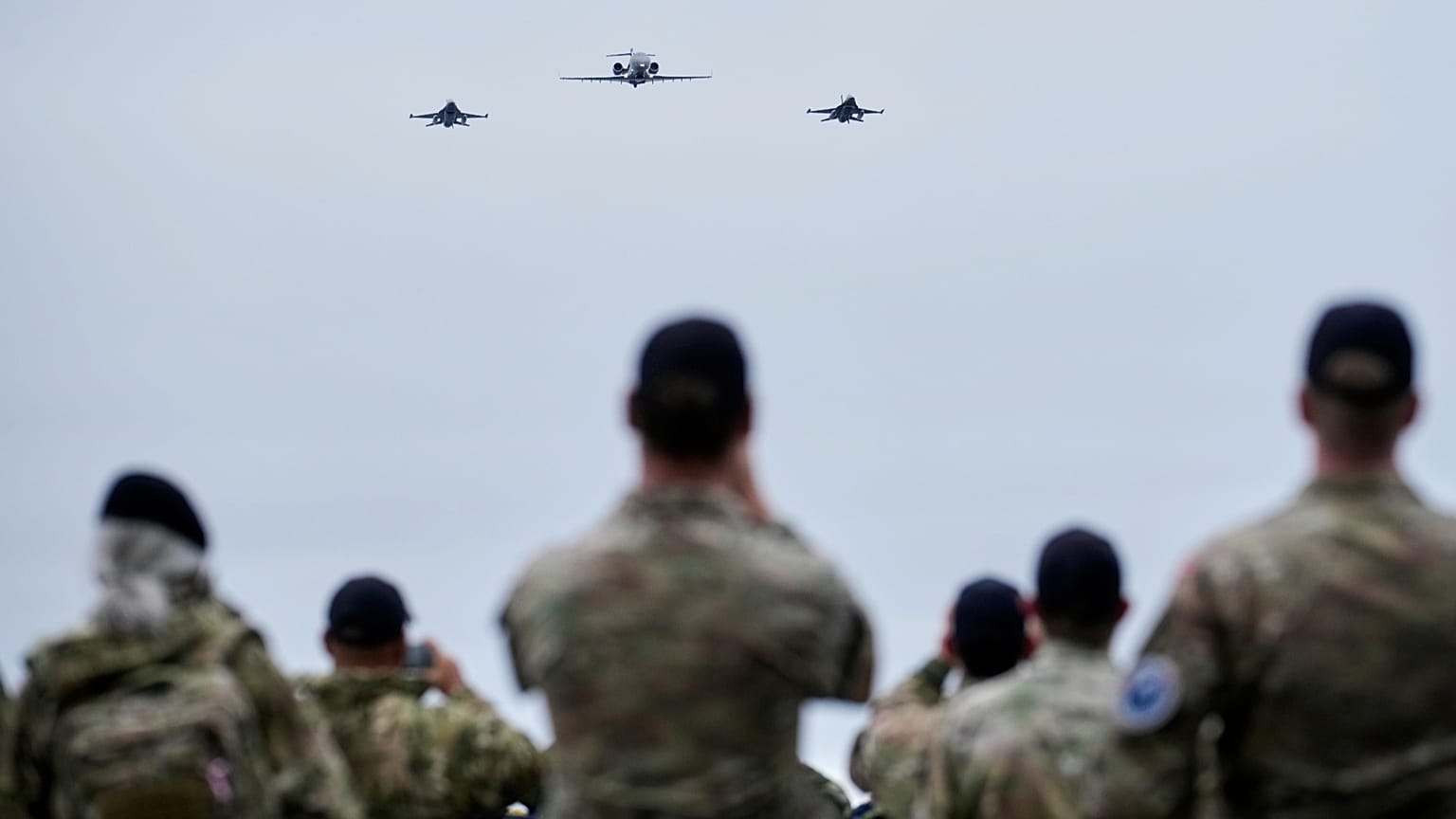A series of airspace violations across the EU has thrusted plans for a so-called drone wall to the top of the agenda for EU leaders meeting in Denmark.
How long will it take Europe to build a drone wall? And how should it be financed? EU leaders arriving in Copenhagen on Wednesday to discuss European defence seemed to have wildly different views, with the traditional geographical divide holding firm on this sudden, but long-expected key European security aspect.
Baltic and northern countries have embraced the project and called for unity and solidarity following a series of airspace violations in the past few weeks in Poland, Estonia, Romania and Denmark.
Evika Siliņa, Latvia's prime minister, for instance told reporters that she believes a drone wall along the eastern flank could be "doable" within "one year, year and a half".
This directly contradicts comments made earlier this week at the Warsaw Security Forum by German Defence Minister Boris Pistorius for whom such a project wouldn't be "realised in the next three to four years".
But the Latvian premier is certain "we can do it in a much shorter time, it just depends on the leaders", adding that with drone technology advancing at such a rapid pace, three years "is too long".
Her Baltic state has already started investing in sensors and sound systems, following advice from Ukraine, and has removed some bureaucratic barriers.
"We will be more stronger if we will work together, and Europe should coordinate," she added.
'We need actions'
Lithuanian President Gitanas Nausėda also called for urgent action, stressing that his country, which borders Russia, has "significant deficits" when it comes to being able to detect and destroy unidentified unmanned aerial vehicles (UAVs).
"Unfortunately, I have to say that a very good idea of rotational air defence systems included into the documents of NATO is not working. Because we had only two elements, Dutch Patriots and short-range air defence system from Italy, for several weeks since 2023," he told reporters.
"We need actions. We, of course, appreciate the discussion, but those discussions should lead to the capacities, to the capabilities. And for that we need financial resources," he said.
Finnish Prime Minister Petteri Orpo, whose country shares a 1,300 km border with Russia, meanwhile described a drone wall as "inevitable" and "a question for the whole of Europe."
"Now it is time to show solidarity for Eastern and Northern Europe in the name of security," he also said.
Kaja Kallas, the former Estonian leader who is now the bloc's foreign policy chief, also implied a drone wall could be erected quickly.
The EU high representative, who took part in a meeting last week between eastern member states on a drone wall, said Ukrainian authorities can "show what kind of sensors do you need, what kind of different lines do you needs, and they also have the drone production in Ukraine and it can be also extended to Europe".
"So if there's a will, there's way and we can do it also faster, but of course it requires funding," she told reporters.
What constitutes defence?
Earlier this year, the European Commission put forward what it says is a €800bn package to rearm Europe before the turn of the decade, when some intelligence agencies believe Russia could have the means to attack another European country.
But member states will actually have to dig deep in their own coffers for the majority of that money with only €150 bn in European funds, in the form of loans, under a programme called SAFE. Two-thirds of the envelope was allocated to eastern member states.
The aims of the various initiatives are to get member states to jointly procure together, to invest in common so-called flagship defence projects, and preferably to buy European. The EU's executive has proposed that a drone wall be part of those flagship projects that should be prioritised.
The Commission has also proposed a massive ramp-up of allocations for defence in the bloc's next multi-annual budget that will run from 2028.
But the debate has shown that member states in the east and those in the south have a wildly different view of what security and defence entail and how urgent it is.
A fact that Pedro Sanchez and Giorgia Meloni reaffirmed on Wednesday with the Spanish leader telling reporters that the climate emergency is a "security aspect (that) will also be incorporated by the government of Spain in this debate".
The Italian premier Meloni, meanwhile, said that "we must remember that the boundaries of the alliance are very large, so if we make the mistake of looking only to the side and forget, for example, that there is a southern flank, we risk not being decisive."
But for Lithuania's Nausėda, their stance misses the point.
"This is our task, the task of Eastern European countries, to bring this energy into the room, this understanding, awareness into the room, and to convince our colleagues, who are probably at larger distance from the enemies, that this is not only about our national borders," he said.
"This is about the external border of the European Union. We are the first defence line of Europe."
This sentiment was echoed by Mette Frederiksen, the Danish prime minister and host of the summit, who urged her fellow leaders to "leave our national perspective (when) talking about security in Europe, and look at the pattern with the hybrid war going on".
"If you look at Ukraine from a European perspective instead of a national perspective, if you're looking at Russia and hybrid war from a European perspective instead of from your own national perspective then I think everybody has to be on the same page, that we have to rearm all of us," she said.















